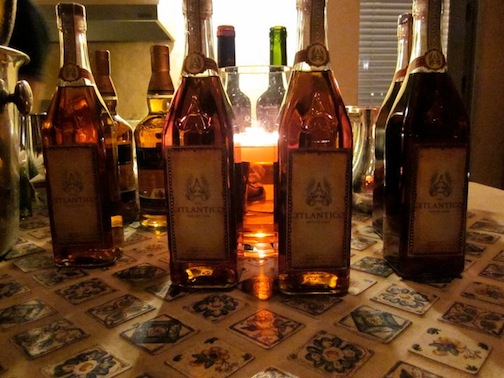The story of Ron Atlantico begins in the Dominican Republic. But even before that, it began at Georgetown University. It was there that co-founders Aleco Azqueta and Brandon Lieb were classmates, and soon after colleagues at Bacardi. Azqueta then went on to run Grey Goose and Dewar’s.
“About four years ago, we really felt that, within the spirits industry, rum was kind of the next wave,” Azqueta tells Rum Journal. “We think it’s very similar to where Tequila was maybe 20 years ago. People didn’t appreciate the nuances of Tequila, or that it could be consumed as a high-end brand. At the time, it was just Cuervo and Sauza.”
With this ambition for rum, the two set out for the Dominican Republic. There, they found a master blender that had been aging rums for 20 years in a solera system. The two worked with him to make a new blend.
As rum evaporates during the aging process, it has to be replaced. That’s done through the solera system, which was invented by the Spanish and first used in sherry production.
There are two general types of rum: traditional rum, made from molasses, and rhum agricole, more popular in the French-speaking Caribbean and distilled from cane juice.
“With Atlantico,” Azqueta says, “we use both.”
The distillation process is not the only unique character to Atlantico, however. In addition to the solera aging process, Atlantico is aged in distinct bourbon barrels.
“Bourbon barrels can only be used once by law, and that goes back to the 1800s from the lumber barons [in the United States],” Azqueta says. “But these barrels have so much more flavor. So the barrels are broken down, sent to different countries. Most of these barrels are heavily charred to take away all the bourbon notes, but we use light charring. We like to maintain vanilla bourbon notes.”
Atlantico, which recently attracted singer Enrique Iglesias to sign as one of the company’s partners, has now released two new blends as well: a white “Platino,” and a drier Reserva edition.
It has launched in 10 countries, and aims to be a national brand in the United States this year, according to Azqueta.
“As more people start traveling to the Caribbean, and as this country becomes more and more multicultural, people appreciate more the hand-craftsmanship that goes into rum,” he says. “What’s really going on is a renaissance in the whole spirits industry. People are looking for things that are more hand-crafted, like what happened in the beer industry.”
Those lightly-charred bourbon casks do make their mark on Atlantico, which has a clear amber color. It’s the blend of rum and rhum agricole that makes for a balanced flavor – with a vanilla and caramel-accented sweetness, reined in by the flavor of cane juice.
Atlantico is relatively new on the block, but, right now, it’s one of the world’s best rums.
— CJ
